Table Of Contents
The screenplay shown in screenshots are from the 2019 film Knives Out. The original screenplay can be downloaded from here and all rights for the screenplay rests with its owners. We are using the screenplay only for explaining features in the product.
Drag-N-Drop To Import
The easiest way to import files from supported file formats is to simply drag them from Finder/Explorer/Nautilus/Konqueror and drop it on the Scrite window.

As of writing you can import screenplays in Final Draft & Fountain file formats. Specially formatted HTML files, like the ones generated using Celtx, can also be imported.
You can also use specific importers from the import menu as explained in the following sections.
Importing From Final Draft
Suppose you have a screenplay in Final Draft format.
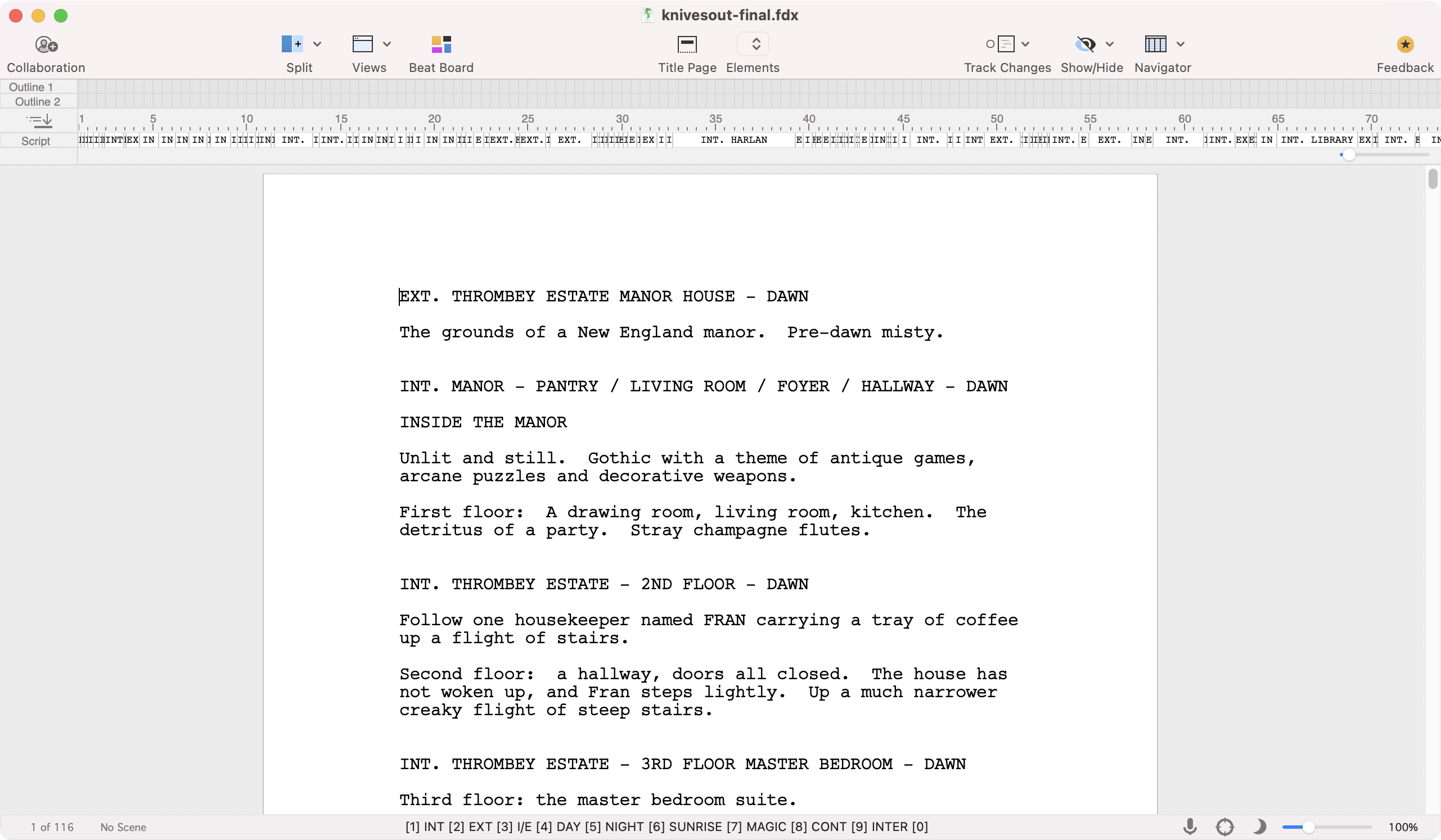
Let’s say you want to import it into Scrite. You can simply click on the Import -> Final Draft option…
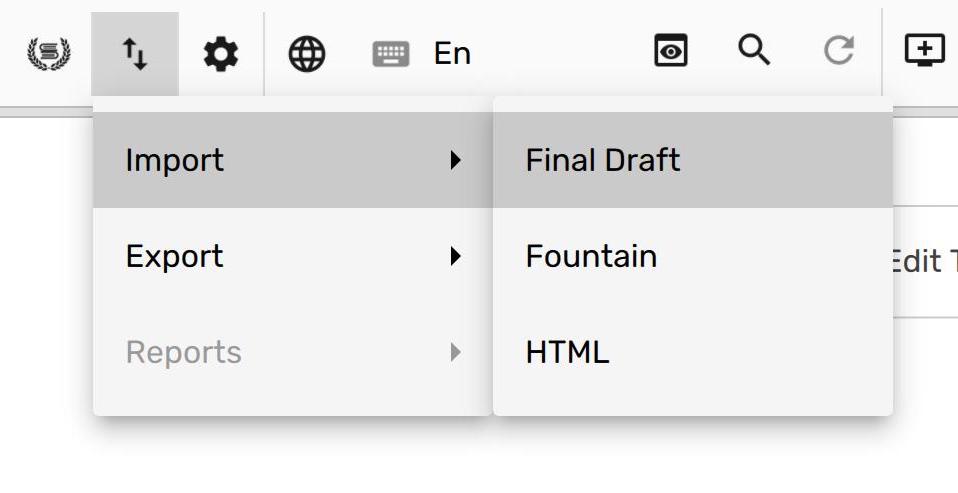
…and select the file you want to import.
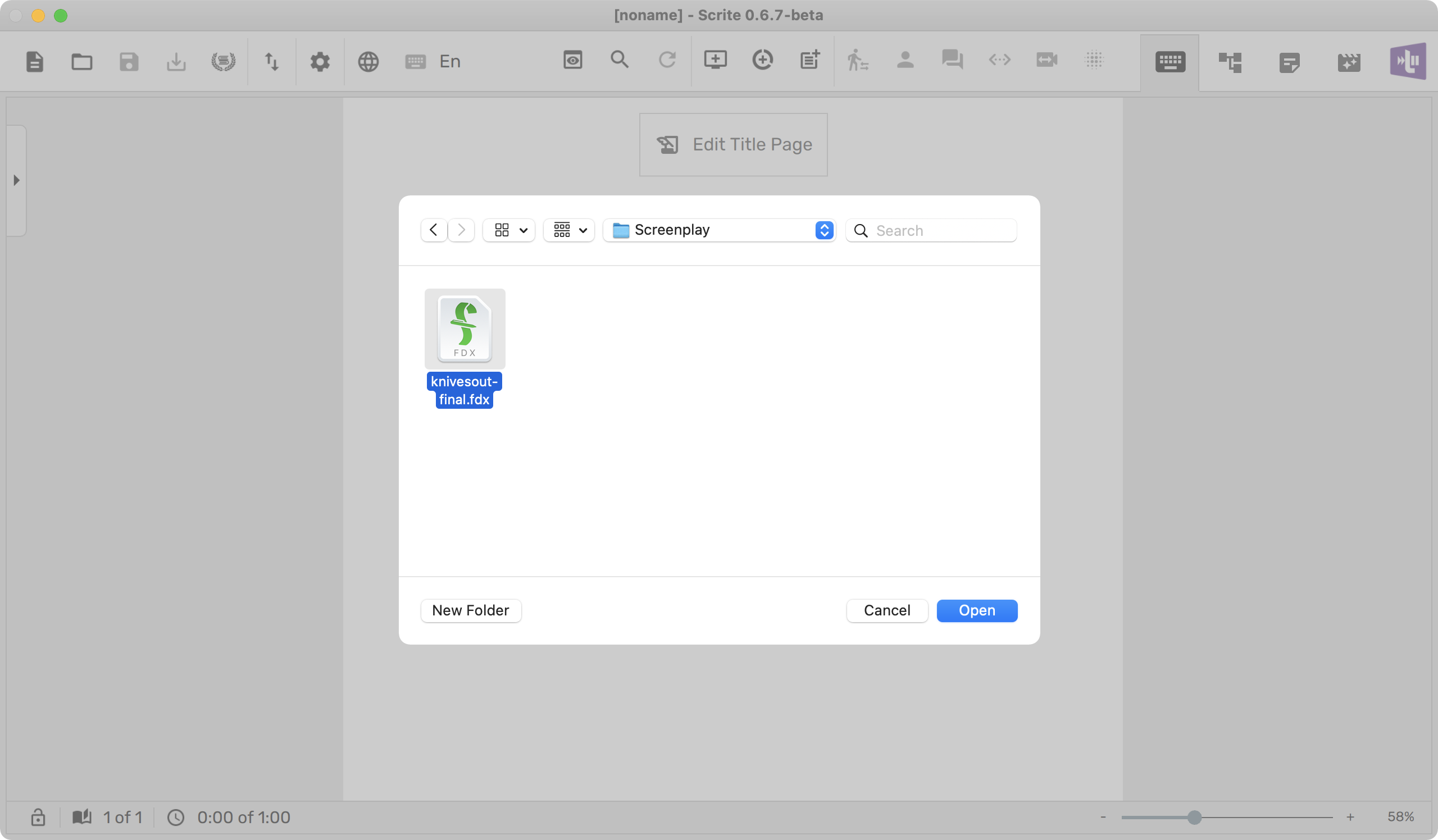
Scrite will parse the Final Draft file, along with all formatting information and present the screenplay to you.
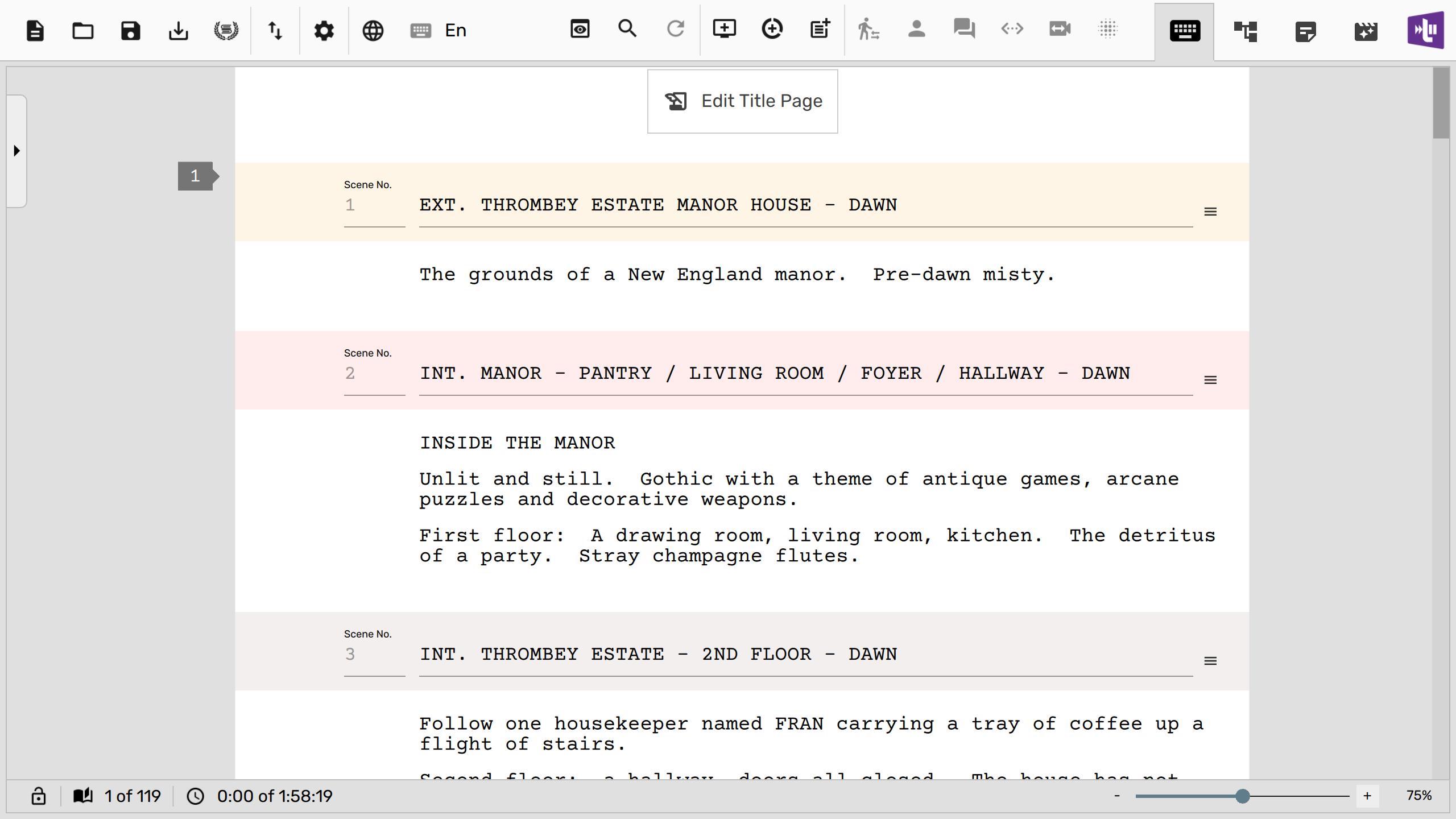
You can now save this as a Scrite document and further work on it.
Once imported, all features of Scrite will now be available for you to work on the imported document. For example, here we can see scenes listed in the scene list panel on the left.
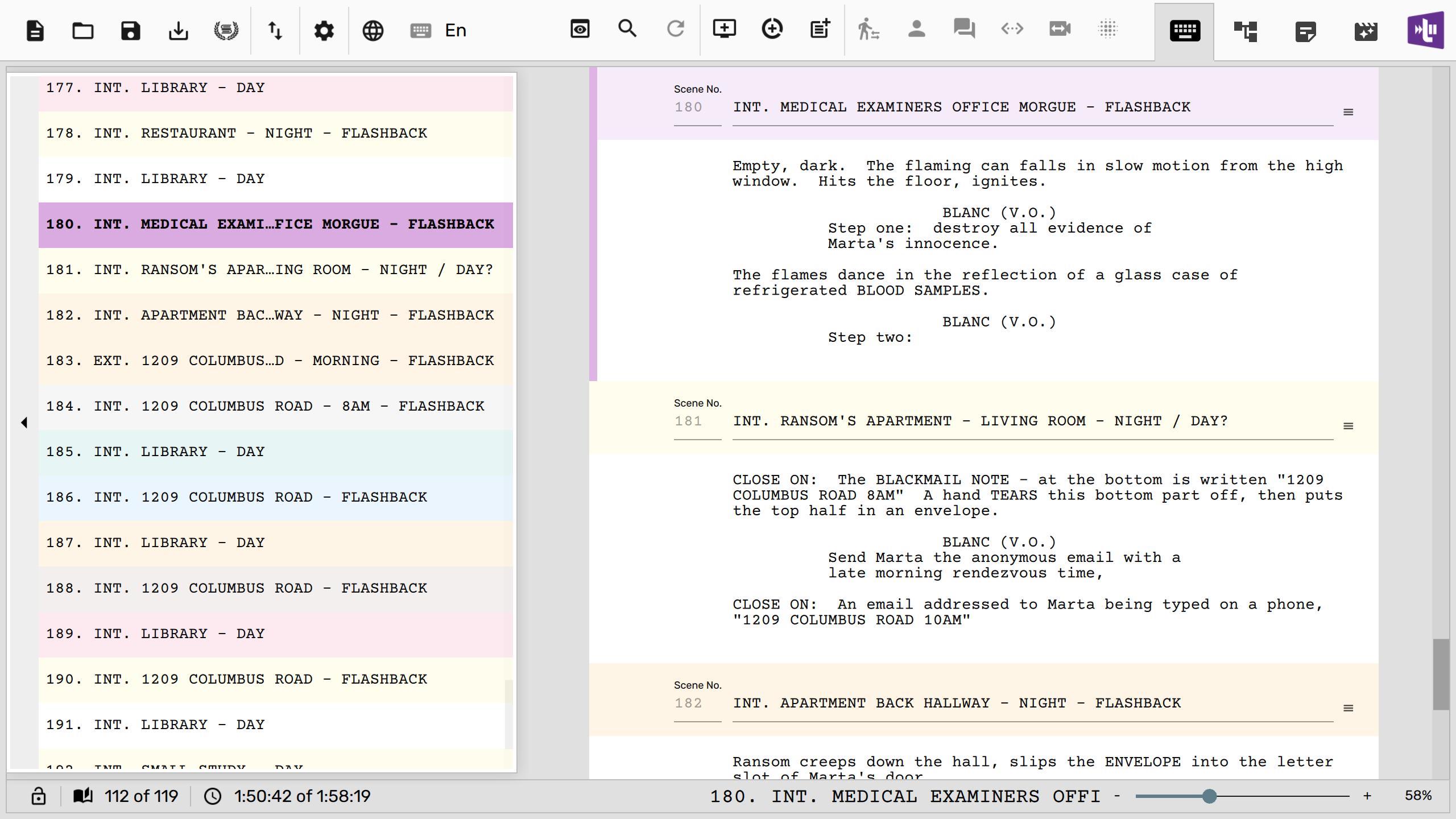
You can turn on the “scene characters” in Screenplay options, to have it displayed.
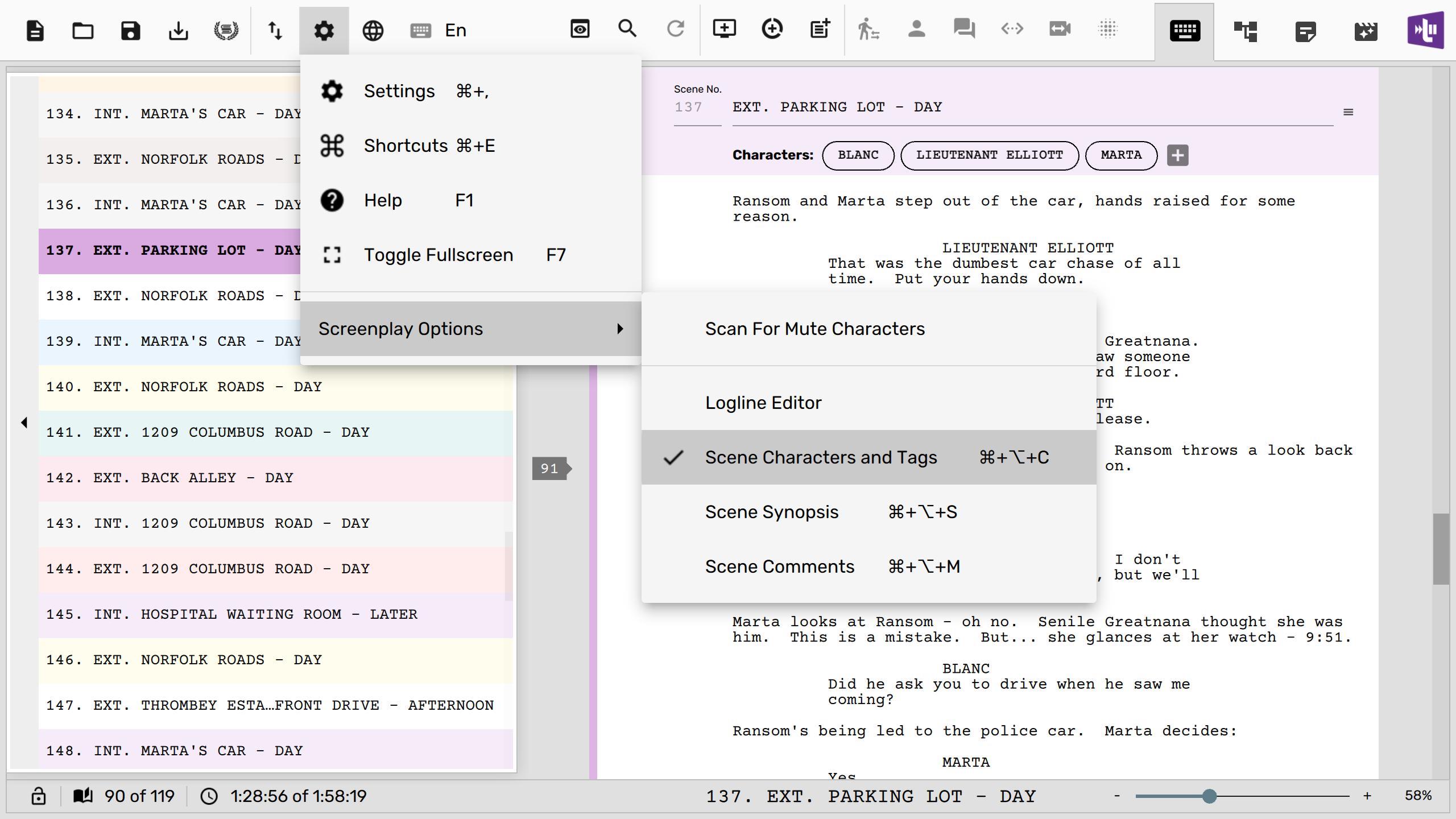
You can even try generating reports from Scrite, for the imported screenplay. Here we generate a “Scene Character Matrix” report…
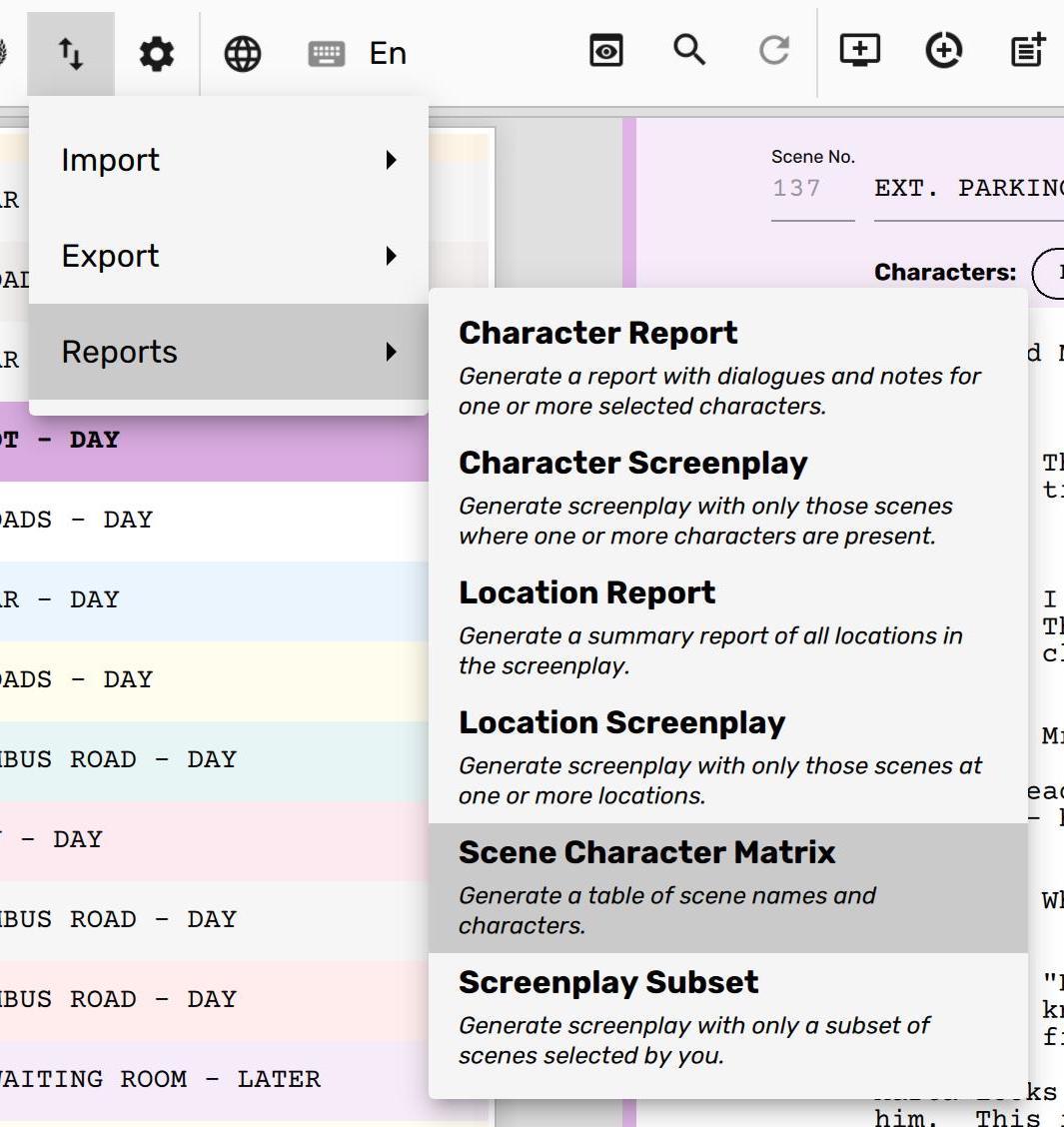
…which visualizes in a table the presence of characters in each scene of the screenplay.
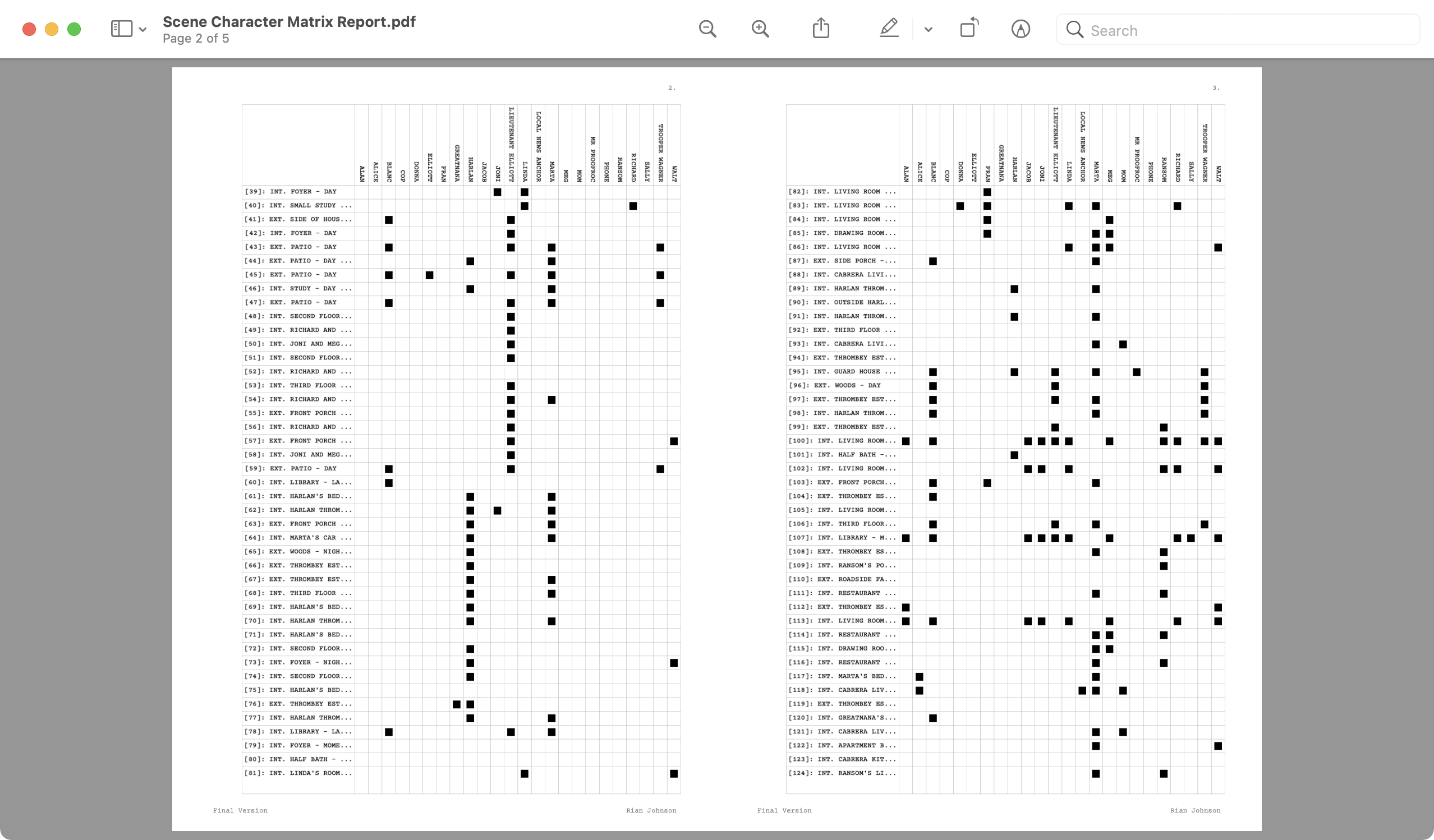
In a future article, we will show you how to use the Structure and Notebook tabs to capture the structure and flow of your story; and capture rich information about characters in your story. Once imported, you can use all those features on the imported screenplay.
Importing from Fountain and Celtx
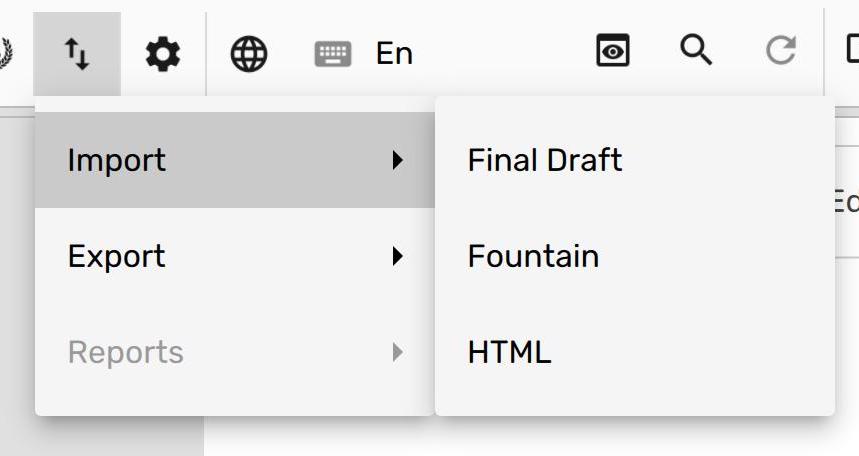
You can import from Fountain files exactly the same way as you imported from Final Draft. Although, the fountain importer may not always get formatting accurately. You will have to go over the imported file and fix any formatting issues manually.
If you have written your Screenplay on Notepad, Microsoft Word,or Libre Office Writer, then you can save it as a UTF-8 text file with .fountain extension; and import the same using Fountain importer in Scrite.
Celtx files can be exported to HTML using the old Celtx Desktop App and then imported into Scrite. If you are using Celtx on the cloud, then download your screenplays in Fountain format and import it into Scrite.
Upcoming Importers
In future updates we hope to provide ability to import from the following formats:
- Highland
- Open Screenplay Format (XML)
What’s next?
In the next article, we talk about advanced editing features.